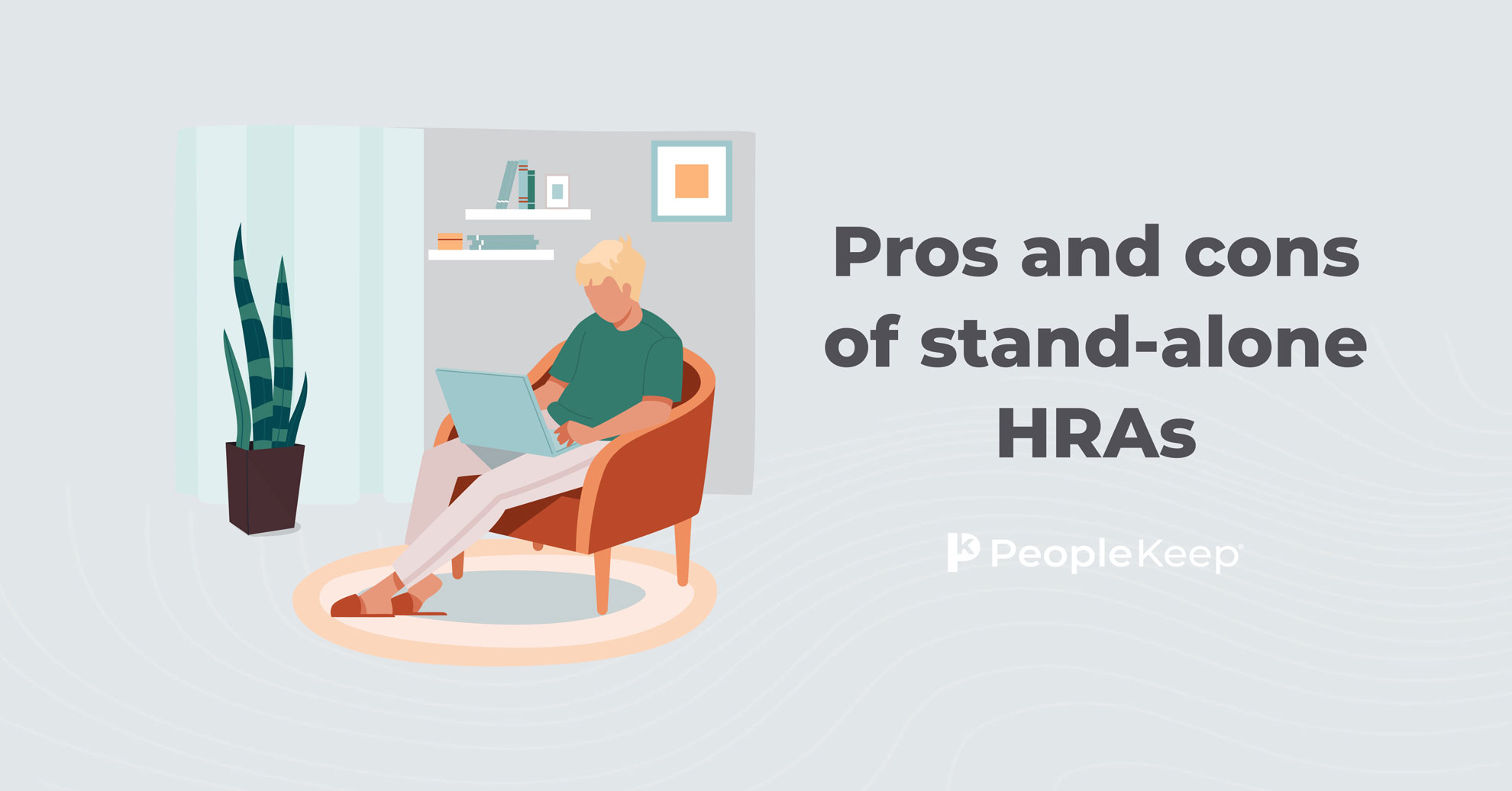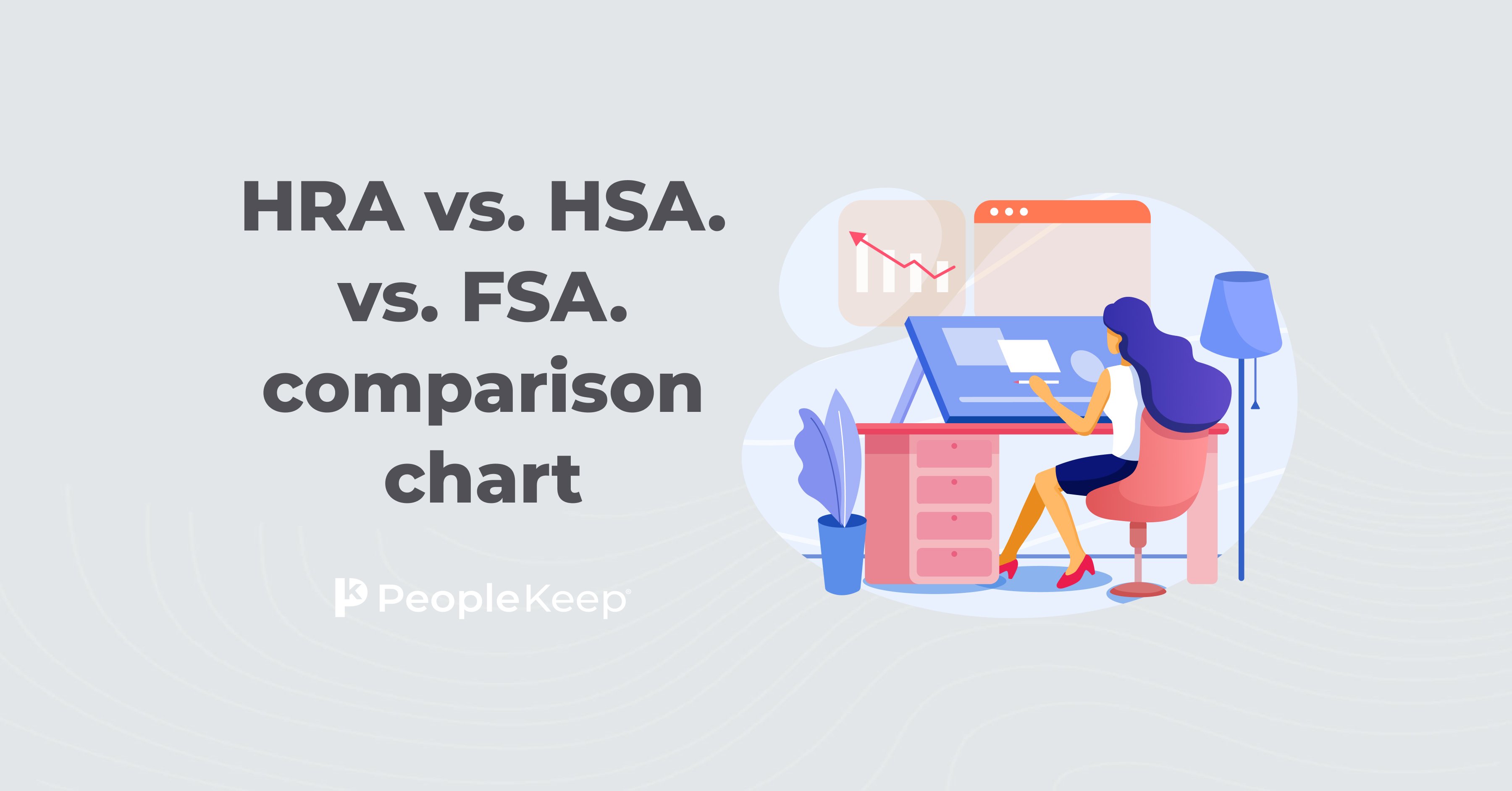What to do if your group health plan doesn't qualify for an HSA
By Elizabeth Walker on July 18, 2025 at 8:30 AM
Health savings accounts (HSAs) are powerful savings vehicles for employees looking to save on medical expenses or prepare for retirement. However, HSA eligibility depends on an individual having a qualifying high-deductible health plan (HDHP) that meets specific requirements.
Employers can make their employees’ healthcare more affordable by contributing to their HSAs. But not all group health plans meet the requirements for HSAs.
In this article, we’ll go over why your employer-sponsored group plan may not qualify for an HSA. We’ll also provide four alternative options available to you if that’s the case.
In this blog post, you’ll learn:
- How an HSA works and why not all high-deductible health plans are HSA-qualified.
- Four alternative employee benefits that employers can use if their group health plan isn’t HSA-compatible.
- How each option can help employers offer their employees personalized support in paying for their out-of-pocket medical costs.
What is a health savings account?
HSAs are tax-advantaged savings accounts that allow individuals to pay for future out-of-pocket medical expenses. According to IRS Publication 502, eligible HSA costs include prescription drugs, dental expenses, mental health counseling, vision care, and more1.
Here’s a quick look at how HSAs work:
- An individual or employer can open an HSA as long as they have an HSA-qualified HDHP. In either case, the individual always owns the account and can take it with them even if they leave their organization.
- Employers and employees can contribute to the HSA as long as the combined contributions don’t exceed the annual contribution limit set by the IRS. Annual HSA funds and investment gains are 100% tax-free.
- Individuals can withdraw tax-free HSA funds anytime to pay for healthcare expenses. But, they must pay income taxes plus a 20% penalty if they spend the money on non-medical items.
- Account holders aged 65 and older can buy other non-qualified healthcare items without paying a penalty.
- Most HSA providers issue account holders a debit or credit card, so they can easily pay for medical services and items at various retail stores.
- All contributed but unused HSA healthcare dollars will remain in the account indefinitely. The funds will roll over annually until the individual spends them.
Why your group health plan may not qualify for a health savings account
If your employer-sponsored group health plan has a high deductible but doesn't qualify for an HSA, you may wonder why.
Many employers believe that if their health insurance plan’s annual deductible and out-of-pocket maximum limits meet specific IRS requirements, their employees are eligible to contribute to an HSA. However, a health insurance plan must meet more than these limits to make it HSA-qualified.
According to the IRS, HSA-qualified HDHPs must meet the following requirements2:
- The HDHP must have a higher annual deductible than typical health insurance plans.
- The plan must have a maximum limit on the annual deductible and out-of-pocket medical costs. Examples of out-of-pocket amounts include copayments, coinsurance, and other items. However, health insurance premiums are exempt.
- The HDHP may cover preventive care — such as yearly physicals and immunizations — without a deductible or with a deductible less than the minimum annual amount.
- Plan participants can’t have any other health coverage (employer-sponsored or individual) except for the following:
- Accidents
- Disability
- Dental care
- Vision care
- Long-term care
- Telemedicine and other virtual healthcare
- Direct primary care arrangements (due to the One Big Beautiful Bill Act)
You can confirm your HDHP's eligibility for an HSA by reading the policy’s coverage details or contacting your insurance company. If it turns out that your company’s HDHP doesn’t meet these guidelines, your employees can’t open or contribute to an HSA.
Thankfully, you can use the other health benefit plans we’ll discuss below in addition to your group plan to help you cover your employees’ out-of-pocket costs.
Option 1: Switch to an HSA-qualified group health plan
If you want to allow your employees to open an HSA, your first option is to switch your employer-sponsored health plan to an HSA-qualified policy. A good first step is to work with an insurance broker to help you find a plan that meets your and your employees’ needs and answer any questions. Working with a broker can be worth it if you’re determined to offer an HSA at your organization.
Option 2: Supplement your health plan with an integrated health reimbursement arrangement (HRA)
If you decide it’s too much trouble to switch your HDHP, another option is to supplement your current health plan with an integrated health reimbursement arrangement (HRA), also called a group coverage HRA (GCHRA).
Like other HRAs, a GCHRA is a tax-free reimbursement benefit designed to help employees pay for qualified out-of-pocket healthcare expenses. You choose a monthly allowance to offer your employees so they can buy medical care. Once your employees show proof of purchase, you approve the expense and reimburse them tax-free up to their allowance limit.
HRAs are employer-owned, so the unused funds stay with you when an employee leaves your company. They also offer tax savings. This means employers don’t have to pay payroll taxes on HRA reimbursements, nor are participating employees subject to federal income taxes.
Here are some other advantages of integrated HRAs:
- This type of HRAs reimburses employees for out-of-pocket expenses not fully covered by their group plan, such as copays, deductibles, and coinsurance.
- A GCHRA will work with any group health plan, including low-deductible health plans (LDHPs). But if your company has an HDHP, a GCHRA can help ease the pressure of a high-deductible while minimizing employees’ health insurance premiums.
- All employees enrolled in your group health plan, whether they have self-only or family coverage, can participate in the GCHRA.
- Unlike an HSA, you can keep your GCHRA even if you change insurance types. This makes a GCHRA a good substitute if you were previously contributing to employees’ HSAs but can no longer because you changed your group health plan from an HDHP to an LDHP.
- The GCHRA has no minimum or maximum employer contribution limits. You can set an allowance that works for your budget and your employees’ needs and adjust it at the end of the plan year if needed.
- You can set customized allowance limits and eligibility rules using seven employee classes. For extra flexibility, you can also restrict the GCHRA’s eligible expenses for reimbursement (by law, group plan premiums are already ineligible).
But if you still want to offer an HRA, there’s one more option to consider.
Option 3: Have your employees buy individual health plans
Suppose you want to drop your group plan and encourage your employees to get an HSA-qualified individual health plan. In this case, they shop for one on a public and private exchange, such as the Health Insurance Marketplace. Most insurance carriers label their plans as HSA-eligible, so your employees will know if they’re choosing the right plan before enrolling.
According to the newly passed H.R. 1 of 2025-2026, also known as the One Big Beautiful Bill Act (OBBBA), beginning in 2026, the government will treat on-exchange individual bronze and catastrophic plans as HSA-qualified HDHPs. This means employees enrolling in bronze or catastrophic health plans can contribute to an HSA3.
Your staff can only enroll in an HSA-qualified individual health plan during the annual Open Enrollment Period, which typically begins on November 1 and ends on January 15 in most states. Outside this time, they must experience a qualifying life event and trigger a special enrollment period to change their health plan.
But you can’t just have your employees buy an individual plan and take the full brunt of the costs. If you want to make your group plan more appealing, consider providing a stand-alone HRA or a health stipend.
Offer a stand-alone HRA
Instead of offering a traditional group health plan, you can switch to a stand-alone HRA. Unlike integrated HRAs, stand-alone HRAs don’t work with group health plans. Instead, they allow you to reimburse your employees tax-free for their individual health insurance premiums and qualified medical expenses. Employers often choose a stand-alone HRA because they’re more affordable and flexible with traditional group health plans.
Besides being incompatible with group health coverage, stand-alone HRAs work the same as integrated HRAs. Employers choose their monthly allowance and reimburse employees tax-free for eligible medical services and items, including individual health plan premiums.
Below are two popular stand-alone HRAs:
- The individual coverage HRA (ICHRA)
- The ICHRA is for businesses of any size and has no minimum or maximum contribution limits. You can also differ allowances and eligibility by employee classes, age, or family size. However, employees must have a qualifying form of individual health coverage to participate.
- Instead of buying a group health plan, applicable large employers (ALEs) can meet the ACA’s employer mandate requirements with an ICHRA.
- The qualified small employer HRA (QSEHRA)
- The QSEHRA is for businesses with fewer than 50 full-time equivalent employees (FTEs) that don’t offer group health coverage. Like HSAs, the IRS sets annual maximum limits. But it has no minimum contribution limits. Employees must have a health plan that provides minimum essential coverage (MEC) to use the QSEHRA.
Depending on your company’s location (or your employees’ locations if you have a remote workforce), the cost of individual health insurance may be cheaper than group coverage. By switching to a stand-alone HRA, you can control your budget, offer your staff more flexibility in their insurance options, and support all your employees’ healthcare needs.
See how HRAs pair with HSAs in our article.
Offer a health stipend
With a health stipend, employees receive a fixed amount of money to help pay for their medical expenses, such as over-the-counter drugs, pain relievers, and vision care. Like GCHRAs, stipends can help employees pay for healthcare costs their group plan doesn’t fully cover.
Health stipends have a few notable benefits:
- Employers typically add stipend funds to an employee’s paycheck as a one-time reward or on a regularly set schedule, making stipends simple to administer.
- Stipend benefits have no minimum or maximum contribution limits. So, you can give your staff as much money as your budget allows.
- Stipends can support any type of employee, including 1099 contractors or international workers, making them flexible and customizable.
However, stipends do have a few potential downsides:
- Unlike HRAs, employers with a stipend are subject to payroll taxes, and employees must pay income taxes on the funds.
- Because health stipends are informal benefit plans, they don't satisfy the Affordable Care Act's employer mandate for applicable large employers (ALEs).
- You can’t require your staff to use their stipend money to pay for health expenses or request that they show proof they purchased medical care.
If you’re an ALE looking to comply with ACA requirements or simply want to offer a more formal benefit plan, your best bet is to opt for an HRA.
Conclusion
While an HSA offers excellent benefits, many employers wrongly assume their HDHP group plan is eligible for one. Luckily, employers have several other options if their group health plan isn’t HSA-qualified.
With an integrated HRA, you can supplement your group health plan with tax-free reimbursements for your staff. Or you can opt for an ICHRA or a QSHERA and end the need for costly group coverage. Whatever your choice, your employees can better control their health outcomes and be more financially stable when paying for qualified medical expenses.
If you think an HRA employee benefit is right for you, contact us, and we’ll get you started!
This article was originally published on February 9, 2022. It was last updated on July 21, 2025.
Check out more resources
See these related articles

Common types of health insurance plans
Learn the pros and cons of the most common types of health insurance plans, such as PPOs, HMOs, HSA-qualified plans, indemnity plans, and alternatives.

Pros and cons of stand-alone HRAs
Stand-alone HRAs can offer flexibility and control over healthcare expenses, allowing employers to customize plans to meet their employees' needs.

HRA vs. HSA vs. FSA comparison chart
Confused about the differences between an HRA, HSA, and FSA? This comparison chart breaks down the key features of each health benefit option.



